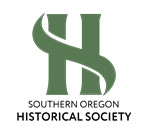Gold Beach derived its name from a short-lived coastal gold rush between the town and Coos Bay, but it was coal that became a significant mining industry on the Southern Oregon Coast.
Coal mining began in the early 1850’s and by 1854 the first shipments went to San Francisco. By the 1870’s, outside entrepreneurs were running most of Oregon’s coal operations.
The Oregon Historical Society says, “In coal’s heyday, the Coos Bay area had seventy-four mines, prospects, and undeveloped outcrops. The value of Coos Bay coal exports in 1876-77 was more than $300,000. The industry employed several hundred miners and gave rise to a number of ephemeral towns, including Libby and Beaver Hill.”
The Beaver Hill mine had a deep vein of coal, producing 200 tons a day for 25 years. The shaft was 3,000 feet below ground level and 1,000 feet below sea level. An explosion in 1921 burned all 21 miners, three of them dying from their injuries. The mine closed three years later.
The Historical Society says the coastal industry declined as the coal market waned in the 1920’s.
Sources: Wells, Gail. "Development of the Coastal Economy: Mining." Oregon History Project. Oregon Historical Society, 2006. Web. 20 Aug. 2015. http://www.ohs.org/education/oregonhistory/narratives/subtopic.cfm?subto... ; Mullaly, Alice. "Beaver Hill Mining Disaster." As It Was. Jefferson Public Radio, 29 May 2008. Web. 20 Aug. 2015. http://archive.ijpr.org/Feature.asp?FeatureID=954&Print=True
The SOHS Library is OPEN to the public at 106 N. Central Avenue in Medford, with FREE access to the SOHS Archives, from 12:00 - 4:00 pm, Tuesday through Saturday. Appointments are not necessary. Please contact library@sohs.org, or call 541-622-2025 ex 200 to ask questions or request research.
Coos Bay, Ore., Exports Tons of Coal in 1800s
Episode
2747
Date
